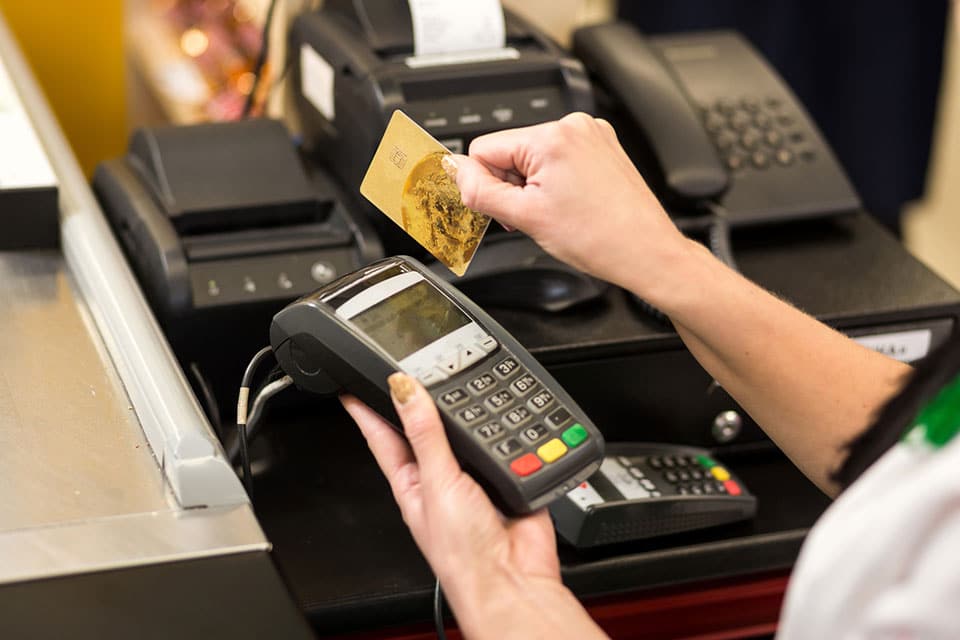Contactless Payments – The Hospitality Industry’s Best Tool In The Fight Against COVID-19

The coronavirus pandemic has all but shut down the hospitality industry across the UK, and the government’s recent easing of lockdown will have come as welcome news to many. With certain restaurants, cafés, and pubs opening their doors from Saturday 4th July, it seems that the country is on its journey back to normality.
As people are now returning to what looks increasingly like everyday life, it remains important for businesses to recognise when things that we used to take for granted must change. This is especially true of the hospitality sector, where there is much more scope for interpersonal contact and therefore a greater need for social distancing measures.
It would be easy to assume that hospitality businesses need to invest in some serious COVID-secure fixtures to make their premises safe, but could the answer be something much more readily accessible like contactless payments?
Catering for the public during coronavirus
At the peak of the UK’s coronavirus pandemic, the government made clear that people should avoid coming into close contact with anyone unless absolutely necessary. This guidance took the form of the “two-metre rule”, which became something of a mantra for much of the country. Whilst making it safer to conduct essential tasks, the two-metre rule made it incredibly difficult for all but a very few of the nation’s hospitality businesses to operate.
To accommodate the increasing movement towards business as usual, the government have now revised their social distancing guidance to “one metre plus” – which amongst other things will make it possible for hospitality businesses of all sizes to begin trading once more if it is safe for them to do so. To meet these guidelines, restaurants and cafes have been scrambling to implement new staff policies, install Perspex screens at counters, and space out tables to avoid customer contact as much as possible.
There’s no doubt that an admirable job has been done across the board, but a business’ approach to public health and safety can only be as good as its payment solution. This is because the exchange of money is a major touchpoint at which bacteria (and by extension viruses) can be spread. Whether handing over cash in a restaurant or inputting a pin on the well-thumbed keypad of a café’s old card machine, customers and staff alike could be put at unnecessary risk by an outdated approach to taking payment.
COVID-secure commerce
Enter contactless payments: the well-established payment solution available to customers using any of the more than 100 million contactless cards currently in circulation. A viable and hygienic answer to taking payment whilst adhering to social distancing guidelines, only with a contactless card reader can hospitality businesses move sales away from their bar and counter areas and instead bring the card machine to the customer.
Contactless cards work with a range of a few centimetres, which means that by using a portable card machine or mobile card reader staff could step back and allow customers to pay for their food, drink or entertainment simply by holding their card close to the device. With only an infrequent need to input a PIN code for security reasons, deploying contactless payments in your hospitality business could save your customers from having to touch the card machine and even cut down congestion in the queue to pay.
Finding a new card payment solution needn’t be a difficult affair, either. At a time when hospitality businesses are reporting in on the challenges of sourcing personal protective equipment (PPE), applying for a merchant services account and card reader could be done completely online. UTP Group, for instance, offer an online application service that could see a contactless portable card machine or mobile card reader dispatched within 48 hours. Time is money, especially if you have a restaurant to reopen!
Ordering by app
For hospitality sector businesses that are truly committed to investing in their payment infrastructure, adopting a digital approach could make your operation run smoother whilst attracting new clients.
Developing and implementing an online ordering system or mobile app could help your staff to remain one meter plus away from customers whilst continuing to fulfil orders as efficiently as possible. Major industry players such as Wetherspoons, Greene King and McDonald’s have been using this technology for some time now and there’s no denying that it makes the process of ordering food or drink to your table much easier.
Any business that is considering approaching an app developer to begin their digital journey should make sure that they cover off all bases too. Your branding and the accessibility of your app could make or break your new approach to ordering, whilst adopting an effective online payment solution such as UTP’s eCommerce payment gateway will be crucial to making it easier for customers to pay and you to get paid.
Making life easier for customers
With the contactless card spend limit being raised from £30 to £45 as of 1 April 2020, adopting a contactless card payment solution could help you to modernise your hospitality business. With the added consideration of coronavirus and social distancing, businesses need to adapt if they are to return to any level of normality and taking up a new approach to payments could be a non-intrusive way of making sales COVID-secure.
Have you read?
World’s Most (And Least) Religious Countries.
World’s Best Countries For Investment In Travel And Tourism Sector.
World’s Best (And Worst) Countries For Older People To Live In.
Countries With The Largest Household Size.
Add CEOWORLD magazine to your Google News feed.
Follow CEOWORLD magazine headlines on: Google News, LinkedIn, Twitter, and Facebook.
Copyright 2024 The CEOWORLD magazine. All rights reserved. This material (and any extract from it) must not be copied, redistributed or placed on any website, without CEOWORLD magazine' prior written consent. For media queries, please contact: info@ceoworld.biz








